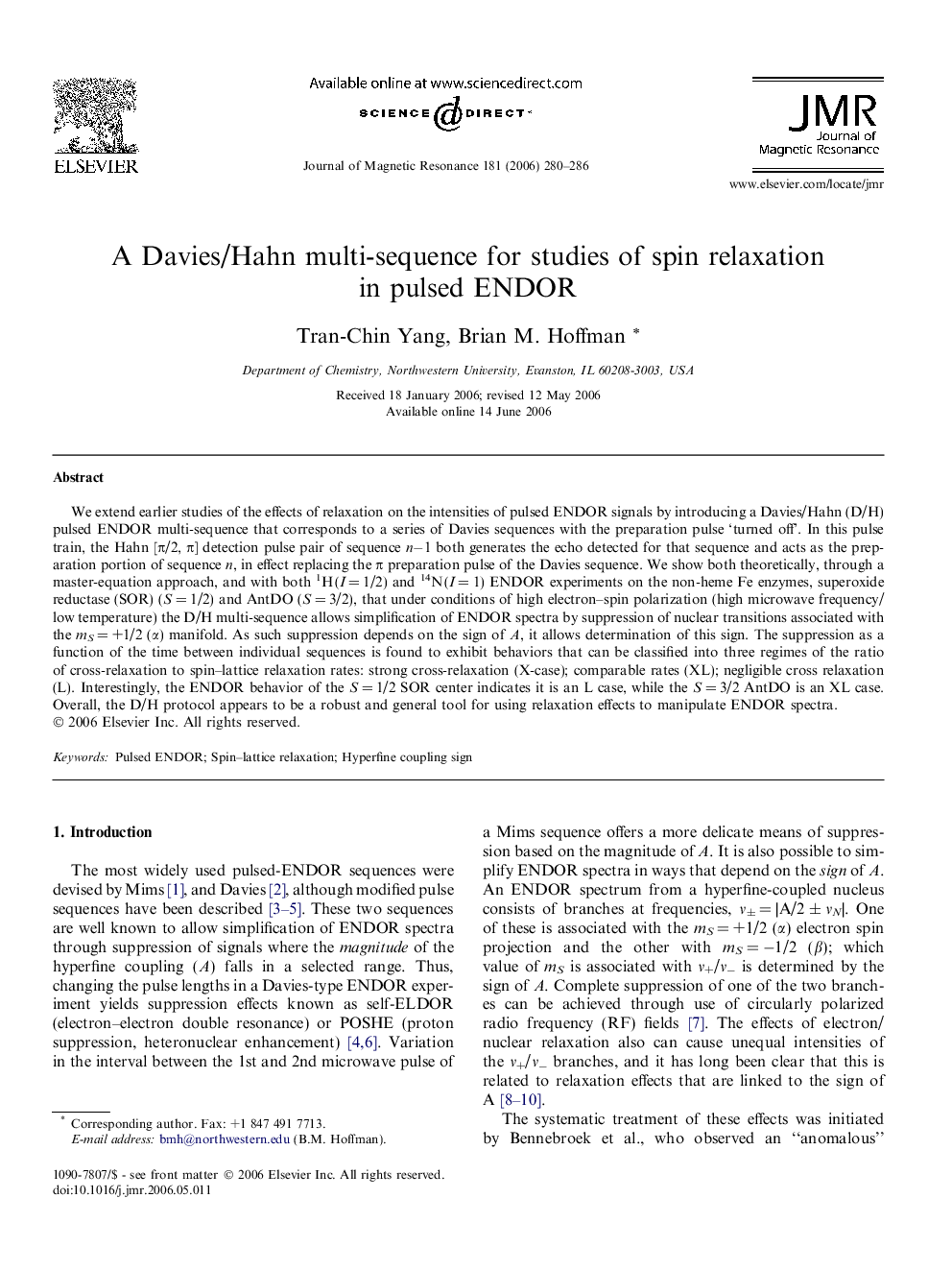| Article ID | Journal | Published Year | Pages | File Type |
|---|---|---|---|---|
| 5407755 | Journal of Magnetic Resonance | 2006 | 7 Pages |
Abstract
We extend earlier studies of the effects of relaxation on the intensities of pulsed ENDOR signals by introducing a Davies/Hahn (D/H) pulsed ENDOR multi-sequence that corresponds to a series of Davies sequences with the preparation pulse 'turned off'. In this pulse train, the Hahn [Ï/2, Ï] detection pulse pair of sequence nâ1 both generates the echo detected for that sequence and acts as the preparation portion of sequence n, in effect replacing the Ï preparation pulse of the Davies sequence. We show both theoretically, through a master-equation approach, and with both 1H (I = 1/2) and 14N (I = 1) ENDOR experiments on the non-heme Fe enzymes, superoxide reductase (SOR) (S = 1/2) and AntDO (S = 3/2), that under conditions of high electron-spin polarization (high microwave frequency/low temperature) the D/H multi-sequence allows simplification of ENDOR spectra by suppression of nuclear transitions associated with the mS = +1/2 (α) manifold. As such suppression depends on the sign of A, it allows determination of this sign. The suppression as a function of the time between individual sequences is found to exhibit behaviors that can be classified into three regimes of the ratio of cross-relaxation to spin-lattice relaxation rates: strong cross-relaxation (X-case); comparable rates (XL); negligible cross relaxation (L). Interestingly, the ENDOR behavior of the S = 1/2 SOR center indicates it is an L case, while the S = 3/2 AntDO is an L case. Overall, the D/H protocol appears to be a robust and general tool for using relaxation effects to manipulate ENDOR spectra.
Keywords
Related Topics
Physical Sciences and Engineering
Chemistry
Physical and Theoretical Chemistry
Authors
Tran-Chin Yang, Brian M. Hoffman,
